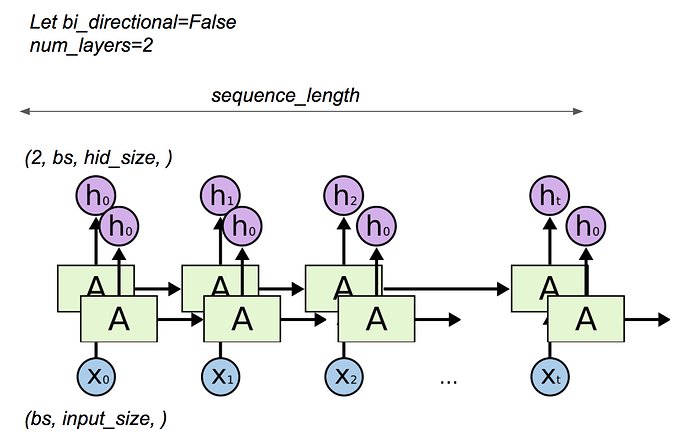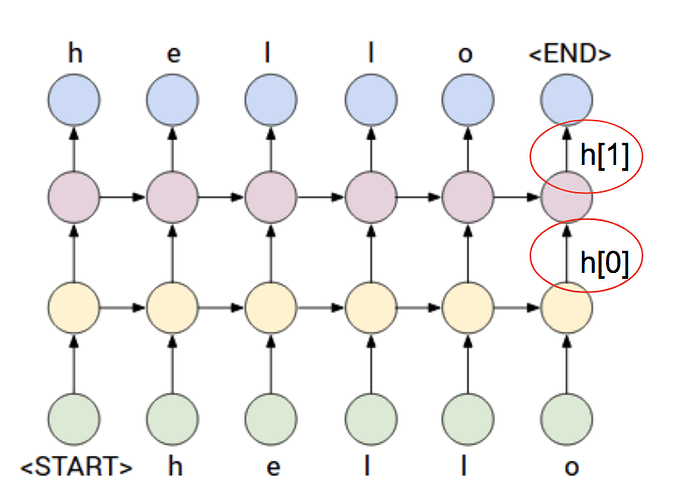Hi, I am not sure about num_layers in RNN module. To be clarify, could you check whether my understanding is right or not. I uploaded an image when num_layers==2. In my understanding, num_layers is similar to CNN’s out_channels. It is just a RNN layer with different filters (So we can train different weights variable for outputting h ). Right?
I am probably right…
class TestLSTM(nn.Module):
def __init__(self, input_size, hidden_size, num_layers):
super(TestLSTM, self).__init__()
self.rnn = nn.LSTM(input_size, hidden_size, num_layers, batch_first=False)
def forward(self, x, h, c):
out = self.rnn(x, (h, c))
return out
bs = 10
seq_len = 7
input_size = 28
hidden_size = 50
num_layers = 2
test_lstm = TestLSTM(input_size, hidden_size, num_layers)
print(test_lstm)
input = Variable(torch.randn(seq_len, bs, input_size))
h0 = Variable(torch.randn(num_layers, bs, hidden_size))
c0 = Variable(torch.randn(num_layers, bs, hidden_size))
output, h = test_lstm(input, h0, c0)
print('output', output.size())
print('h and c', h[0].size(), h[1].size())
---
TestLSTM (
(rnn): LSTM(28, 50, num_layers=2)
)
output torch.Size([7, 10, 50])
h and c torch.Size([2, 10, 50]) torch.Size([2, 10, 50])

